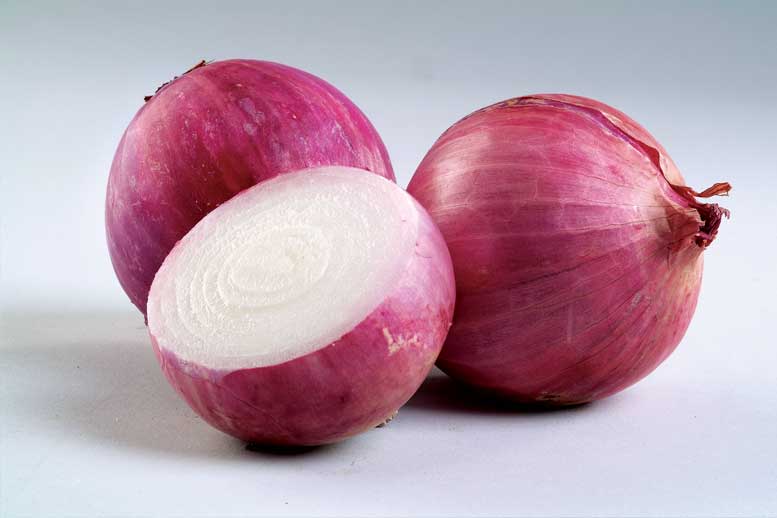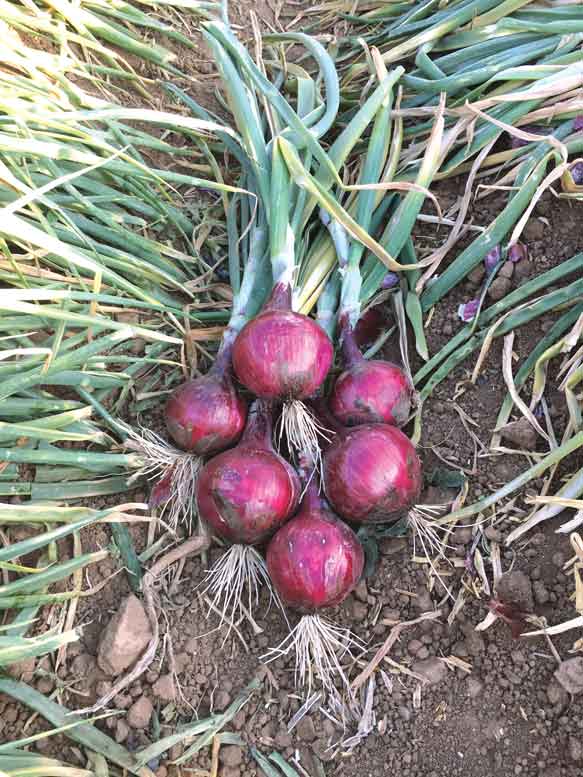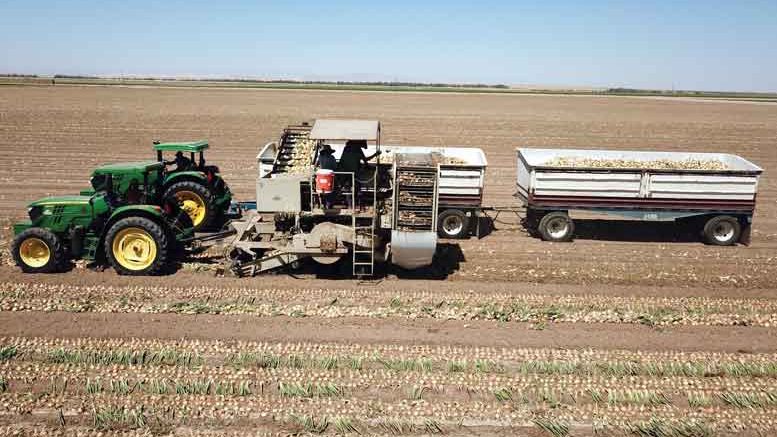|
Click to listen to this article
|
By Ben de Nijs, Product Manager, Onions, Hazera
Onions are a daily ingredient in the kitchen for many people worldwide. And although an onion is not sold at variety level in the supermarket – there, you just buy a yellow, red, white or, in some markets, a pink onion – the variety is important to growers.
“They are focusing on disease resistance, skin quality, firmness and yield,” says Pablo Salgado, an onion breeder at Hazera. “Hazera is constantly working on innovations in this area in order to achieve the best onion with the highest yield for growers, processors and buyers. An example is the development of varieties that are suitable for multiple processing options, so that the grower has more possibilities in terms of sales opportunities.”
More Sales Opportunities
Hazera, part of Limagrain Group, specializes in the development, production and marketing of onion seed. Hazera onion breeders have been working on strong varieties since the 1950s. The distribution of new, improved onion varieties is a slow process that can sometimes take more than 25 years. It is, therefore, important to have a good vision of the market needs and trends.
“For years, the focus within the company has been on breeding and cultivation in the local markets. But since 2008, when Hazera was formed in its current form, there has been a complete global focus,” says Reinout de Heer, global product manager of Allium. “Onions are sensitive to day length. The length of the day determines the moment of bulb formation of the onion. Different varieties are, therefore, more or less suitable for cultivation per day length zone, from short-day onions to extra-long-day onions. Due to the global focus, development programs and knowledge can be combined. This has given the worldwide cultivation, production and sale of high quality onion seed a significant boost.”

Partnership in Peru
The Peruvian onion market is one that has grown thanks to the collaboration between Hazera and Semiagro. With over 40,000 acres of planted cultivation area, the onion crop is positioned as the highest producing vegetable in the Peruvian market. The national consumption of pink onions represents 83 percent and 17 percent for the export market (mainly sweet onions for the U.S.). In addition, the conditions for onion growers have improved, the possibilities for the national and export potential market for wholesalers have increased, and consumers have access to better quality onions, according to Salgado.
Semiagro and Hazera have been working together for more than two decades on the development of hybrid onion varieties in Peru. Today, the pink Sivan F1 is the leading variety on the market and is recognized throughout the chain for its characteristics: excellent post-harvest qualities, good skin retention, beautiful color and thin necks. There are already promising trials for early onions. Year after year, Hazera is experiencing excellent results from three new varieties (10414, 10416 and 10417), the result of 19 years of trials.
Mechanical Harvest
Within the yellow short-day onion segment, the trend is to produce more firm and more uniform round onions, a change that is necessary because manual harvesting and processing is becoming too expensive.
“By making sure the onions are firm and round, they can be harvested and sorted more easily by the grading machine,” Salgado says. “Maintaining and improving qualities such as firmness, skin retention and disease resistance is very important.”

Golden Combination
In countries such as New Zealand and the Netherlands, many onions are destined for export. In the U.S., onions are shipped all over the country.
“The onions must also remain of high quality during and after transport. Skin retention and firmness are important elements for good quality onions,” de Heer says. “In addition, the net yield must be good. As a grower, you can get a high yield from the field, but in the end, you get paid for the yield upon delivery. Excellent quality and high net yield is the golden combination.”
Climate, Red Onions
Other developments that Hazera is paying attention to are irrigation solutions and red onions.
“The climate is changing. We are conducting tests so that we can respond effectively to longer periods of drought or more precipitation,” Salgado says.
“And the market for red onions is growing,” de Heer adds. “We are expanding our portfolio in all segments – both in the short-day and in the extra-long-day – with our latest variety in development, for example, the Toro Rosso (tested as 10415). This main-season red short-day onion is planted in several strip trials across short-day production areas in the U.S. in the fall of 2021.”

